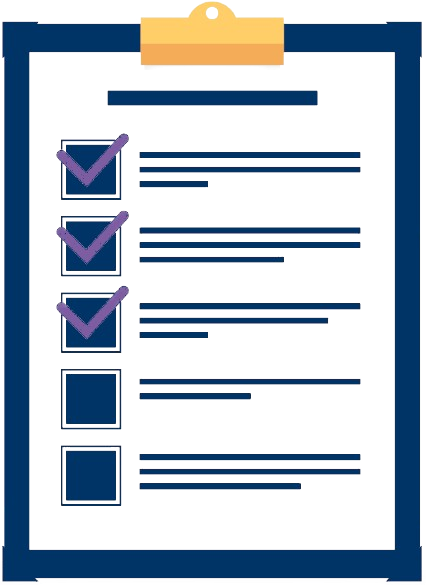Suggestions based on the Question and Answer that you are currently viewing
How could a bank generate higher income before tax (as a percentage of assets) when its net interest margin has decreased? (LO2)
Describe agency costs and give several examples of them.
Travel Inc. sells tickets for a Caribbean cruise to Carmel Company employees. The total cruise package costs Carmel $70,000 from ShipAway cruise liner. Travel Inc. receives a commission of 6% of the total price. Travel Inc. therefore remits $65,800 to ShipAway. Prepare the entry to record the revenue recognized by Travel Inc. on this transaction.
Coldwell, Inc. issued a $100,000, 4-year, 10% note at face value to Flint Hills Bank on January 1, 2014, and received $100,000 cash. The note requires annual interest payments each December 31. Prepare Coldwell’s journal entries to record (a) the issuance of the note and (b) the December 31 interest payment.
An NC machine tool table is powered by a servomotor, leadscrew, and optical encoder. The leadscrew has a pitch = 5.0 mm and is connected to the motor shaft with a gear ratio of 16:1 (16 turns of the motor for each turn of the leadscrew). The optical encoder is connected directly to the leadscrew and generates 200 pulses/rev of the leadscrew. The table must move a distance = 100 mm at a feed rate = 500 mm/min. Determine (a) the pulse count received by the control system to verify that the table has moved exactly 100 mm; and (b) the pulse rate and (c) motor speed that correspond to the feed rate of 500 mm/min.
Neville Enterprises has a number of fully depreciated assets that are still being used in the main operations of the business. Because the assets are fully depreciated, the president of the company decides not to show them on the balance sheet or disclose this information in the notes. Evaluate this procedure.
Assume that Toni Braxton Company has recently fallen into financial difficulties. By reviewing all available evidence on December 31, 2014, one of Toni Braxton’s creditors, the National American Bank, determined that Toni Braxton would pay back only 65% of the principal at maturity. As a result, the bank decided that the loan was impaired. If the loss is estimated to be $225,000, what entry(ies) should National American Bank make to record this loss?
During its first year of operations, Collin Raye Corporation had the following transactions pertaining to its common stock. Jan. 10 Issued 80,000 shares for cash at $6 per share. Mar. 1 Issued 5,000 shares to attorneys in payment of a bill for $35,000 for services rendered in helping the company to incorporate. July 1 Issued 30,000 shares for cash at $8 per share. Sept. 1 Issued 60,000 shares for cash at $10 per share. Instructions (a) Prepare the journal entries for these transactions, assuming that the common stock has a par value of $5 per share. (b) Prepare the journal entries for these transactions, assuming that the common stock is no-par with a stated value of $3 per share.
Novak Corporation is preparing its 2014 statement of cash flows, using the indirect method. Presented below is a list of items that may affect the statement. Using the code below, indicate how each item will affect Novak’s 2014 statement of cash flows. Code Letter Effect A Added to net income in the operating section D Deducted from net income in the operating section. R-I Cash receipt in investing section P-I Cash payment in investing section R-F Cash receipt in financing section P-F Cash payment in financing section N Noncash investing and financing activity Items ____ (a) Purchase of land and building. ____ (j) Increase in accounts payable. ____ (b) Decrease in accounts receivable. ____ (k) Decrease in accounts payable. ____ (c) Issuance of stock. ____ (l) Loan from bank by signing note. ____ (d) Depreciation expense. ____ (m) Purchase of equipment using a note. ____ (e) Sale of land at book value. ____ (n) Increase in inventory. ____ (f) Sale of land at a gain. ____ (o) Issuance of bonds. ____ (g) Payment of dividends. ____ (p) Redemption of bonds payable. ____ (h) Increase in accounts receivable. ____ (q) Sale of equipment at a loss. ____ (i) Purchase of available-for-sale investment. ____ (r) Purchase of treasury stock.
What is an orthogonal cutting operation?
‘We treat spoiled units as fully completed regardless of when the spoiled units are detected. This method makes unit costing much simpler.’ What is wrong with this approach?
What is meant by the concept of ‘learning by exporting’?
What is a carryover basis as it relates to property received by a corporation in a §351 transaction? What is the purpose of attaching a carryover basis to property received in a §351 transaction?
A 2.0-in-long billet with diameter = 1.25 in is direct extruded to a diameter of 0.50 in. The extrusion die angle = 90°. For the work metal, K = 45,000 lb/in2 , and n = 0.20. In the Johnson extrusion strain equation, a = 0.8 and b = 1.5. Determine (a) extrusion ratio, (b) true strain (homogeneous deformation), (c) extrusion strain, and (d) ram pressure at L = 2.0, 1.5, 1.0, 0.5 and zero in. Use of a spreadsheet calculator is recommended for part (d).
What are some possible disadvantages to investors who invest in stocks listed on a private stock market? (LO5)
(Looking at the Maths) Given the following supply schedule: P 2 4 6 8 10 0 10 20 30 40 (a) Draw the supply curve. (b) Using the arc method calculate price elasticity of supply (i) between P = 2 and P = 4; (ii) between P = 8 and P = 10 (c) Using the point method calculate price elasticity of supply at P = 6. (d) Does the elasticity of the supply curve increase or decrease as P and Q increase? Why? (e) What would be the answer to (d) if the supply curve had been a straight line but intersecting the horizontal axis to the right of the origin?
Amirante Inc. manufactures an X-ray machine with an estimated life of 12 years and leases it to Chambers Medical Center for a period of 10 years. The normal selling price of the machine is $411,324, and its guaranteed residual value at the end of the noncancelable lease term is estimated to be $15,000. The hospital will pay rents of $60,000 at the beginning of each year and all maintenance, insurance, and taxes. Amirante Inc. incurred costs of $250,000 in manufacturing the machine and $14,000 in negotiating and closing the lease. Amirante Inc. has determined that the collectibility of the lease payments is reasonably predictable, that there will be no additional costs incurred, and that the implicit interest rate is 10%. Instructions (a) Discuss the nature of this lease in relation to the lessor and compute the amount of each of the following items. (1) Lease receivable at inception of the lease. (2) Sales price. (3) Cost of sales. (b) Prepare a 10-year lease amortization schedule. (c) Prepare all of the lessor’s journal entries for the first year.
Allocation rates – update question (business name) DataShow’s IT support department budgets its costs at $40 000 per month plus $12 per hour. For November the following were the estimated and actual hours provided by the IT support department to three operating departments. Required (a) What is the support department’s allocation rate if estimated activity is the allocation base? (b) What is the support department’s allocation rate if actual activity is the allocation base? (c) List one advantage and one disadvantage for each type of allocation rate.
1. Do you think it is realistic that BOP business practices can have a positive effect on poverty and other social problems in developing countries? Discuss how those effects might occur.
Oregon Co. had purchased 200 shares of Washington Co. for $40 each this year and classified the investment as a trading security. Oregon Co. sold 100 shares of the stock for $45 each. At year-end, the price per share of the Washington Co. stock had dropped to $35. Instructions Prepare the journal entries for these transactions and any year-end adjustments.
What are the three basic components of an automated system?
Campbell’s tax return was audited because they failed to report on their tax return interest they earned. What IRS audit selection method identified their tax return?
Graber Corporation runs a long-haul trucking business. Graber incurs the following expenses: replacement tires, oil changes, and a transmission overhaul. Which of these expenditures may be deducted currently and which must be capitalized? Explain.
Identify which basic principle of accounting is best described in each item below. (a) Norfolk Southern Corporation reports revenue in its income statement when the performance obligation is satisfied instead of when the cash is collected. (b) Yahoo! recognizes depreciation expense for a machine over the 2-year period during which that machine helps the company earn revenue. (c) Oracle Corporation reports information about pending lawsuits in the notes to its financial statements. (d) Eastman Kodak Company reports land on its balance sheet at the amount paid to acquire it, even though the estimated fair value is greater.
What is the nature of a “sale-leaseback” transaction?
The benefits of buying with AnswerDone:

Access to High-Quality Documents
Our platform features a wide range of meticulously curated documents, from solved assignments and research papers to detailed study guides. Each document is reviewed to ensure it meets our high standards, giving you access to reliable and high-quality resources.

Easy and Secure Transactions
We prioritize your security. Our platform uses advanced encryption technology to protect your personal and financial information. Buying with AnswerDone means you can make transactions with confidence, knowing that your data is secure

Instant Access
Once you make a purchase, you’ll have immediate access to your documents. No waiting periods or delays—just instant delivery of the resources you need to succeed.
